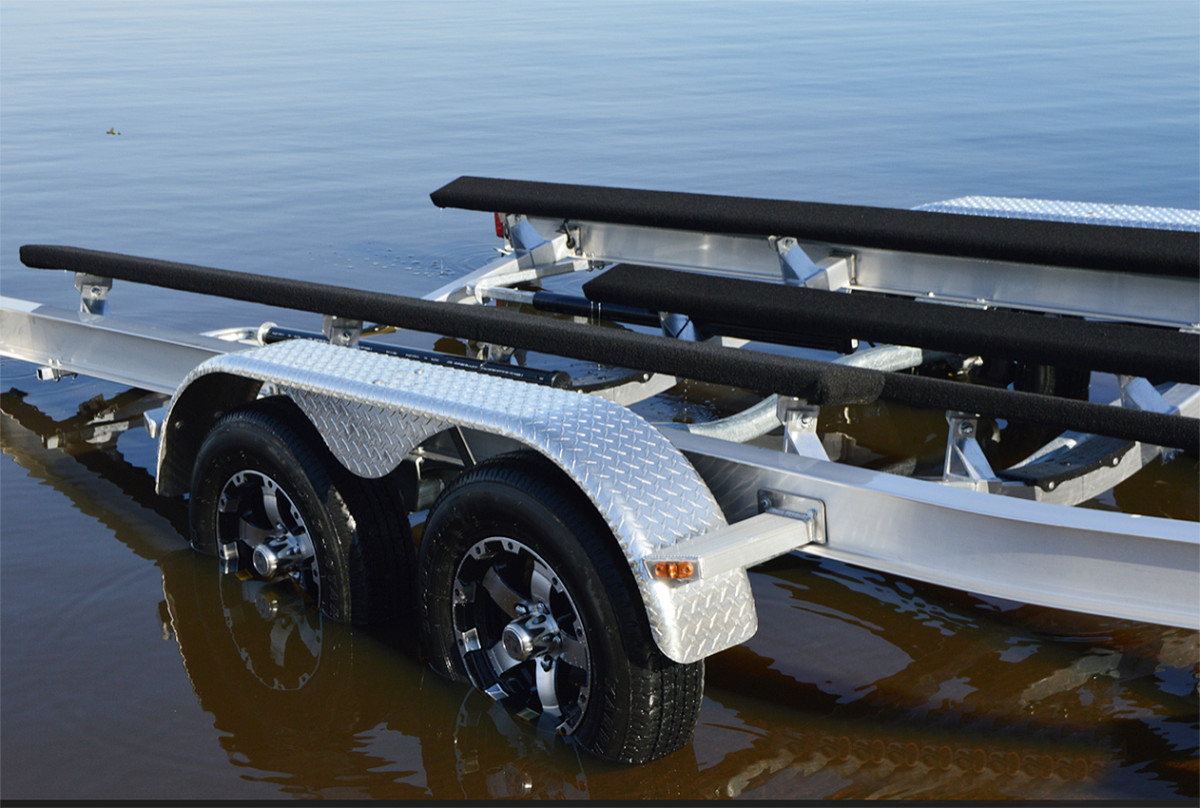What Causes a PFD to Wear Out Over Time? Factors and Prevention Tips
Personal flotation devices, or PFDs, are essential for water safety, but they do not last forever. Sun exposure, high temperatures, and chemical damage are the primary reasons a PFD wears out over time.

When PFDs are constantly exposed to sunlight, ultraviolet (UV) rays break down the materials, weakening their structure and reducing buoyancy.
Improper maintenance and storage also contribute significantly. Storing a PFD in a damp or salty environment can lead to mold and abrasion, further deteriorating the material. High temperatures can warp and fade the fabric, making it less effective.

Using a PFD frequently in rough conditions can also decrease its lifespan. Friction and repeated wear and tear from physical activity can cause small tears and general wear.
By understanding these factors, you can take the necessary steps to protect your PFD and enhance its longevity. For more details, check out the insights on PFD wear and tear.
Material Degradation Over Time
Personal Flotation Devices (PFDs) can become less effective over time due to several factors. Key causes include sun exposure, chemical damage, and the presence of moisture leading to mold and mildew growth.
Effect of Sunlight and UV Rays
PFDs, often made from synthetic materials like nylon and polyester, can deteriorate with prolonged sun exposure. UV rays break down the fibers in these materials, causing them to weaken and become less durable. Sunlight also affects the foam inside PFDs, leading it to degrade and lose buoyancy.
Visible signs of damage include faded colors and brittle textures. Frequent use in sunny conditions accelerates this process, making regular inspection crucial to ensure safety.

Chemical Exposure and Damage
PFDs can be damaged by various chemicals, including gasoline, oils, and common cleaning agents. Chemical exposure breaks down the synthetic fabrics and can cause the materials to crack or become brittle.
PFDs exposed to chemicals should be cleaned promptly with fresh water. Continuous exposure to harmful substances can weaken straps and buckles, reducing the safety and reliability of the device.
Moisture's Impact: Mold and Mildew
Humidity and moisture can lead to mold and mildew growth on PFDs. These organisms thrive in damp conditions and can deteriorate the synthetic materials. Mold can make the PFDs smell unpleasant and degrade fabrics and foam, compromising the device's integrity.
It’s important to dry PFDs thoroughly after each use and store them in a well-ventilated area. Regular cleaning helps prevent mold and mildew from taking hold and ensures that the PFD remains safe and effective.

Physical Wear and Tear
Physical wear and tear can significantly reduce the lifespan of a Personal Flotation Device (PFD). Key areas of concern include the straps and buckles, zippers and closures, and the foam and buoyancy materials.
Straps and Buckles Usage
Straps and buckles play a crucial role in securing a PFD. Over time, repeated usage can cause these components to wear out. Friction from constant tightening and loosening can lead to frayed straps and compromised buckles.
Exposure to saltwater, common in many aquatic environments, can lead to corrosion of metal buckles.
It’s also important to note that plastic components can become brittle and snap with age and UV exposure. Regular inspection and careful handling can help mitigate some of this wear and tear.
Zippers and Closures
Zippers and closures are also vulnerable to physical wear and tear. These elements endure frequent pulling and tugging, which can cause tears and rips in the surrounding areas. Zippers can become stuck or stripped over time, especially if not properly maintained.
Dirt and sand can get lodged in zippers, causing them to fail. Additionally, elements like salt and chlorine can speed up the deterioration process. Lubricating zippers and keeping them clean can prolong their functionality.
Foam and Buoyancy Materials Deterioration
The foam inside a PFD provides the critical buoyancy required for safety. However, foam can degrade due to constant compression, dents, and exposure to harsh chemicals. This degradation can lead to a reduction in buoyancy.
Moreover, physical impact can create small rips or cracks, allowing water to seep in and affect performance. Regular checks and timely replacement of damaged foam can help maintain safety standards. Proper storage and avoiding excessive pressure can also extend the life of the flotation materials.
Environmental Factors Affecting Durability
Personal flotation devices (PFDs) are affected by various environmental factors that contribute to their wear and tear. Important causes include water exposure, particularly saltwater, and climate conditions such as temperature and humidity.
Water and Saltwater Effects
Exposure to water, especially saltwater, speeds up the deterioration of PFDs. The salt in saltwater corrodes metal parts and degrades fabrics. Straps and buckles weaken over time due to the corrosive nature of salt.
Regular exposure to freshwater doesn't have the same corrosive effect but can still lead to wear over time. Proper maintenance, such as rinsing the PFD with fresh water after saltwater use, can slow down this process. Storage in a cool, dry place helps to reduce the impact of moisture.
Temperature and Climate Impact
Temperature and climate play a crucial role in the durability of PFDs. High temperatures can degrade the foam inside the PFD, making it less buoyant and more prone to damage. UV rays from direct sunlight can break down fabrics like nylon and polyester, leading to faster wear.
Storing PFDs in a shaded area or inside a closet helps prevent sun exposure damage. Humidity and moisture can also lead to mold and mildew if PFDs are not properly dried and stored. Keeping them in a cool, dry place extends their lifespan.
Best Practices for PFD Maintenance
Proper maintenance of a personal flotation device (PFD) extends its lifespan and ensures it functions correctly. Key practices involve routine cleaning and inspection, proper storage, and knowing when to replace the PFD.
Routine Cleaning and Inspection
Regular cleaning and inspection are essential. After use, rinse the PFD with fresh water to remove salt, sand, or dirt. For deeper cleaning, use a mild soap solution. Avoid harsh chemicals that can break down the materials.
Inspect the PFD for signs of wear, such as frayed seams or discolored fabric. Check the labels for any weight recommendations and replace if it no longer meets those guidelines. Pay extra attention to the straps, buckles, and zippers, ensuring they are in good working order.
PFD Storage Tips
Proper storage is crucial to maintain the PFD in optimal condition. Store it in a cool, dry place away from direct sunlight. Ultraviolet rays can cause the fabric to deteriorate quickly.
Avoid placing heavy objects on top of the PFD, as this can damage the internal foam. Hanging the PFD on a peg or using a dedicated storage rack can help maintain its shape. Make sure it is fully dry before storing to prevent mold and mildew growth.
When to Replace Your PFD
Knowing when to replace a PFD is vital for safety. If the PFD shows signs of significant wear, such as torn fabric or foam that no longer bounces back, it is time for a new one.
Check for fading and brittleness, which indicate UV damage.
Poke at the foam; if your finger goes through it, the foam is breaking down and the PFD is no longer safe.
Always follow manufacturer guidelines and inspect for any recalls or safety notices related to your life jacket model. Regularly updated safety standards also guide replacement intervals.
Signs of PFD Wear and Damage
Personal Flotation Devices (PFDs) can show signs of wear and damage that are important to identify for safety. This includes visual indicators of deterioration and performing functionality checks to ensure the PFD still works effectively.
Visual Indicators
Visual signs of wear and tear on a PFD are straightforward to spot. Check for discolored or faded material, as UV exposure can cause this.
Observe any rips, tears, or abrasions on the fabric which can weaken the PFD's structural integrity.
Pay attention to the straps and buckles. Look for fraying, cracking, or weakening, as these components are crucial for a secure fit. Metal parts might show signs of corrosion, especially if exposed to saltwater.
Inspect for grime or mold, which suggests the presence of bacteria. This can deteriorate the materials over time. Scratches on reflective areas reduce visibility in low-light conditions, impacting safety.
Functionality Checks
Testing the buoyancy and performance of a PFD is essential to ensure it remains functional.
Press on the foam sections; if they feel too soft or your finger easily creates an indentation, the foam might be degraded.
Check if the PFD still floats effectively by testing it in water. A PFD that doesn’t stay buoyant is no longer safe.
Verify all closures function correctly, ensuring they haven’t become loose or broken.
Ensure no water leaks into the PFD when submerged. Leaks can indicate weakened or compromised materials.
Perform regular lift tests by holding the PFD by its shoulders to ensure the structural integrity is intact and it can still provide adequate support.
Additional Considerations
When discussing what causes a PFD to wear out over time, it's important to consider the types of PFDs and their specific applications. This section covers the materials used in different PFDs and how they affect wear, and the specific needs for different water activities.
Special PFD Types and Materials
Different Personal Flotation Devices (PFDs) use various materials that impact longevity.
For example, inflatable PFDs usually contain bladders made from robust materials like nylon or polyurethane. They require regular maintenance to check for leaks and fabric wear. UV rays, saltwater exposure, and rough handling can degrade these materials faster.
Some PFDs are designed specifically for children, using softer, more flexible materials to improve comfort and safety.
These PFDs need regular inspection to ensure that seams, buckles, and straps are free from damage. Synthetic fabrics in child's PFDs might break down more quickly due to frequent use and constant abrasion.
Foam-based PFDs are another common type, often used for recreational activities like boating and swimming.
These PFDs can undergo material compression and reduced buoyancy over time, especially if not dried properly after use.
PFDs for Various Water Activities
PFDs are crafted with different activities in mind, influencing their durability.
For kayaking and canoeing, PFDs often feature abrasion-resistant materials to handle friction against rough surfaces. These PFDs can wear faster due to frequent paddling motions that cause repetitive stress on the shoulders and sides.
In whitewater rafting, PFDs must withstand significant wear from rocks, branches, and other obstacles.
These PFDs typically include reinforcements and rugged materials to ensure they last longer under harsh conditions.
PFDs for fishing often integrate additional pockets and gear holders, leading to more points of wear.
Anglers should check the stitching and zippers for signs of deterioration due to repetitive use and exposure to water.
In swimming and general boating, PFDs need to be versatile and comfortable.
The focus on comfort can sometimes mean lighter materials, which may not hold up as well under extended use. Regular checks for UV damage and ensuring proper drying after each outing are crucial to extending the life of these PFDs.
Frequently Asked Questions
Various factors such as environment, material quality, usage frequency, and maintenance can affect the lifespan of Personal Flotation Devices (PFDs). Here are some common questions people may have about these factors:
How do environmental factors contribute to the degradation of a PFD?
Environmental elements like UV exposure and saltwater contact can cause PFDs to wear out. Sunlight can weaken the fabric, and saltwater can corrode metal parts and damage straps.
What maintenance practices can extend the lifespan of a PFD?
Rinsing PFDs with freshwater after use, especially if exposed to saltwater, helps prevent corrosion and material damage. Also, storing them in cool, dry places away from direct sunlight can protect their integrity.
Are there particular materials in PFDs that are more prone to wear and tear?
Materials like nylon and foam are more prone to abrasion and UV damage. Metal components can corrode faster when exposed to saltwater, making these materials critical points of maintenance.
How does repeated usage impact the effectiveness of a PFD over time?
Frequent use can lead to quicker wear and tear. Straps may lose elasticity, and stitching can come undone, resulting in reduced buoyancy and safety over time.
What are the signs of wear and tear to look for in an aging PFD?
Look for faded colors, frayed straps, and loose stitching. If the PFD has metal parts, inspect them for rust or corrosion. Any compromise in material integrity can indicate that the PFD is no longer safe.
How frequently should a PFD be inspected to ensure its reliability?
Inspect your PFD before every use for visible signs of damage. Do a thorough check every few months, especially if you use it frequently or store it in harsh environments.
Charlie is Editor-in-Chief of Sea Magazine







